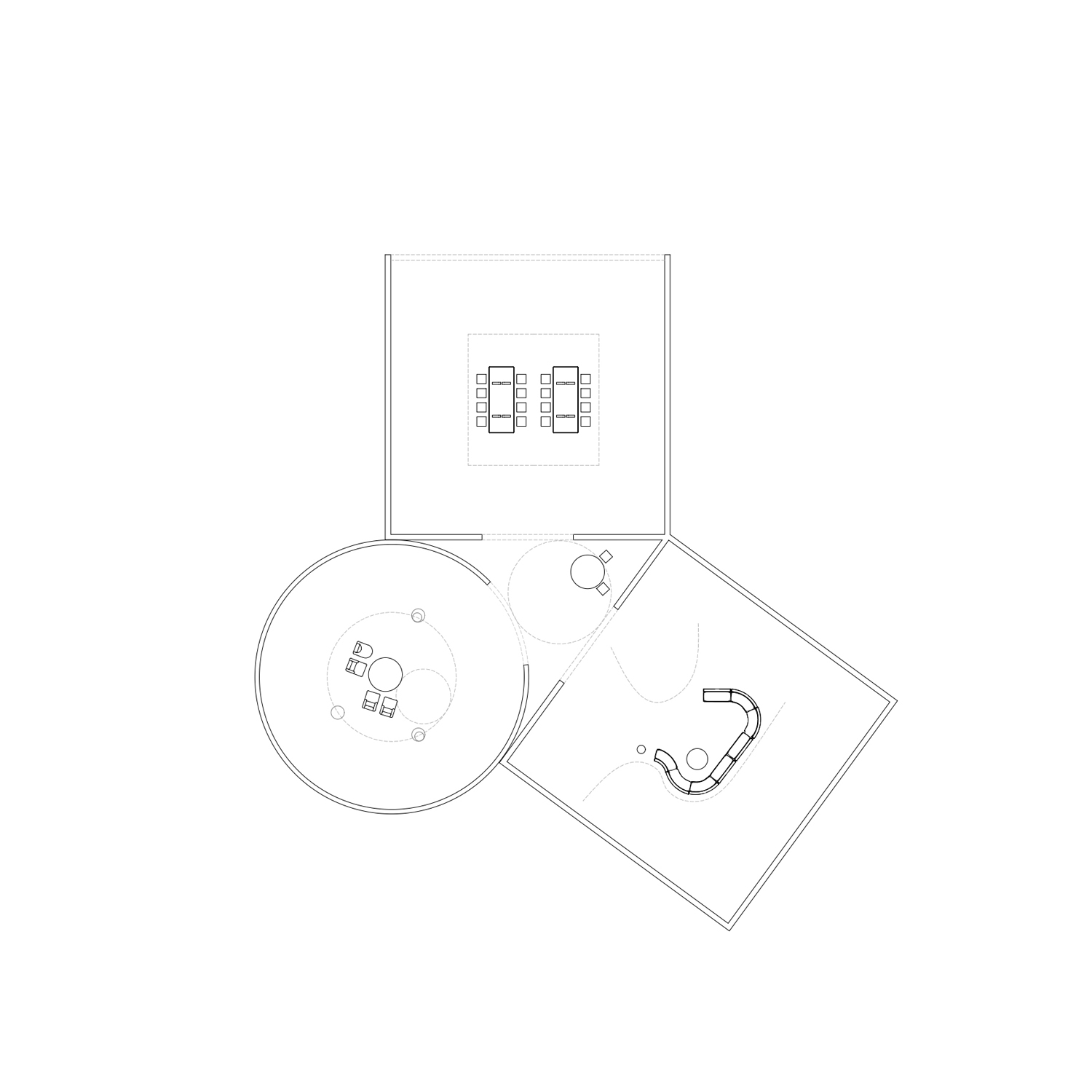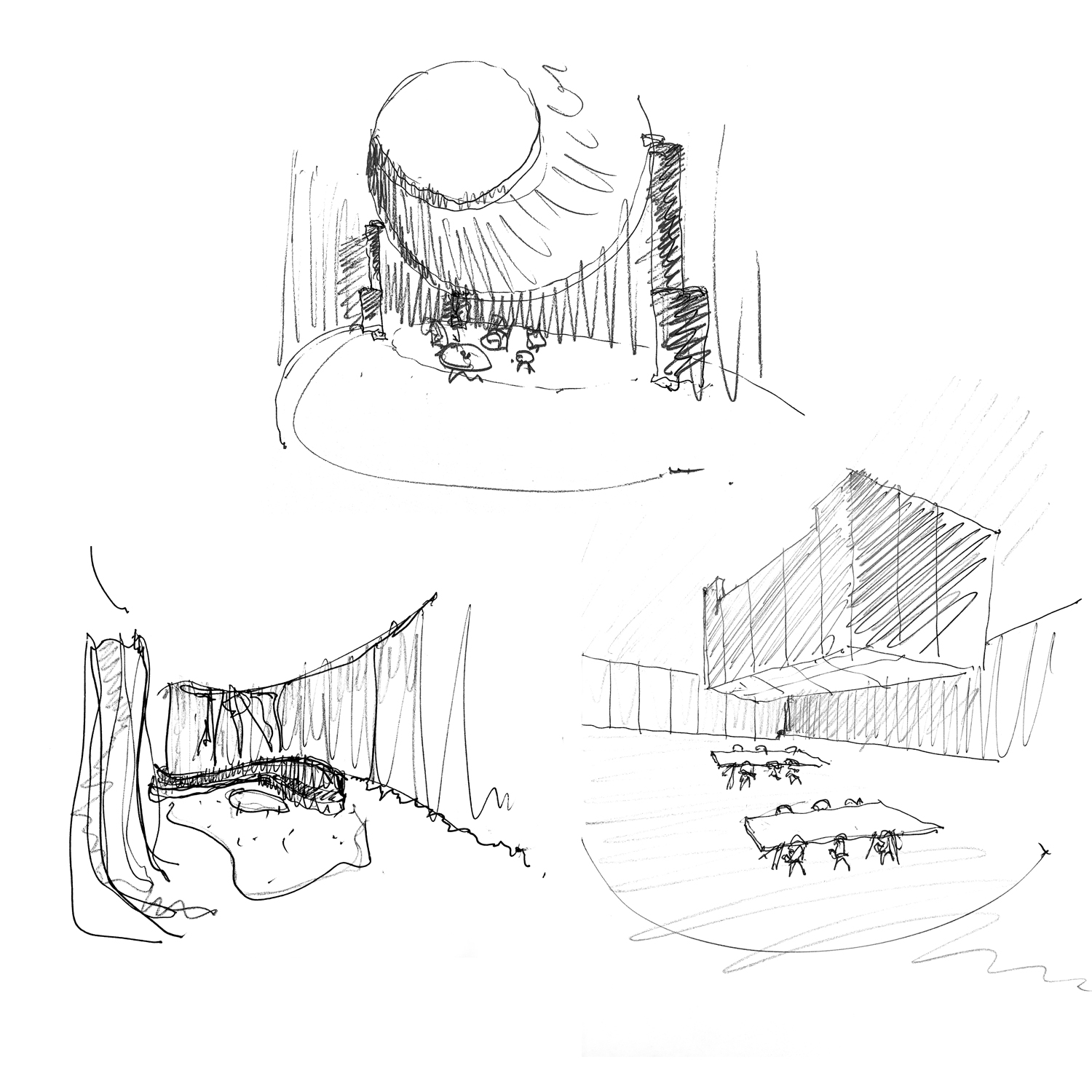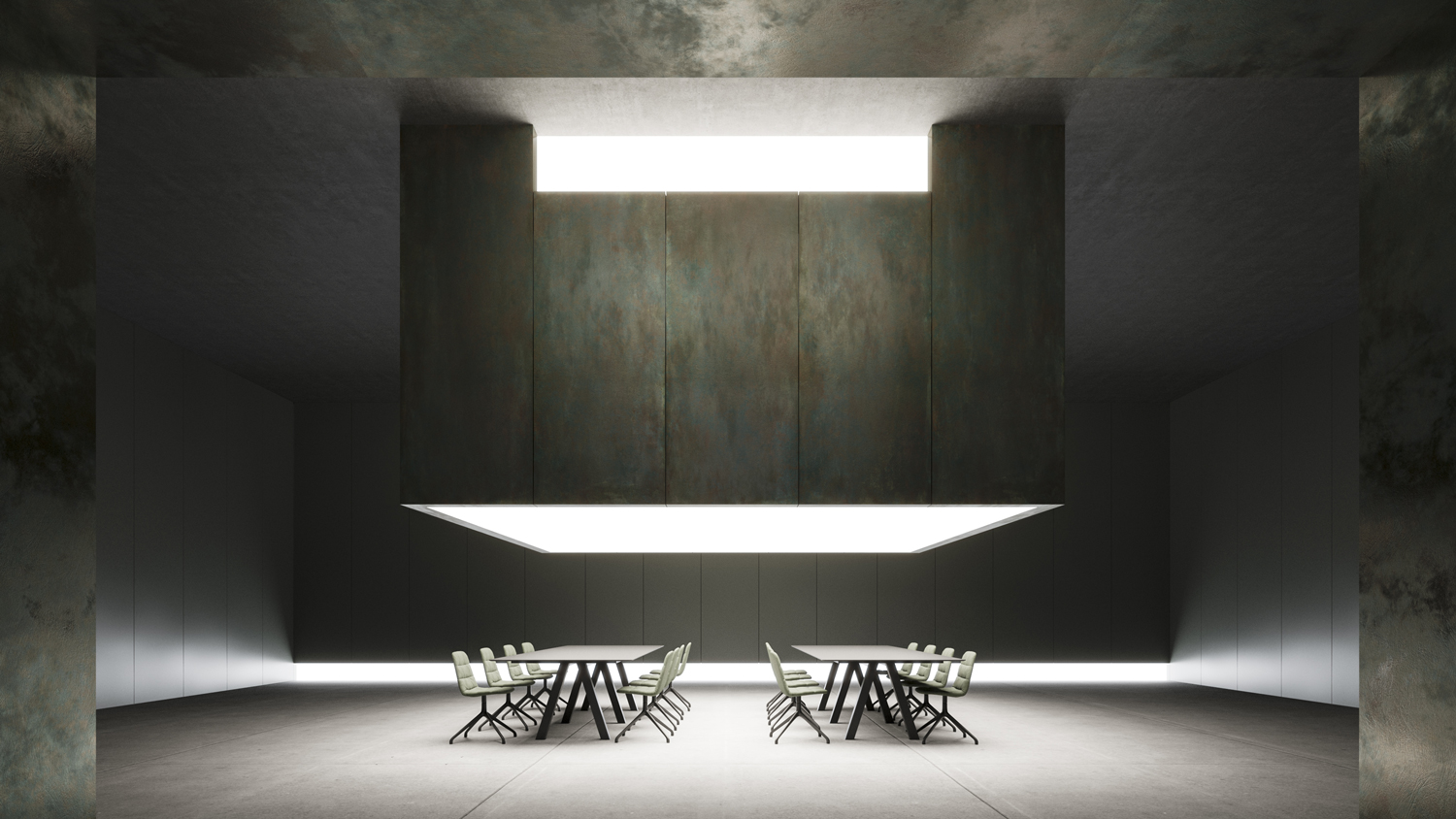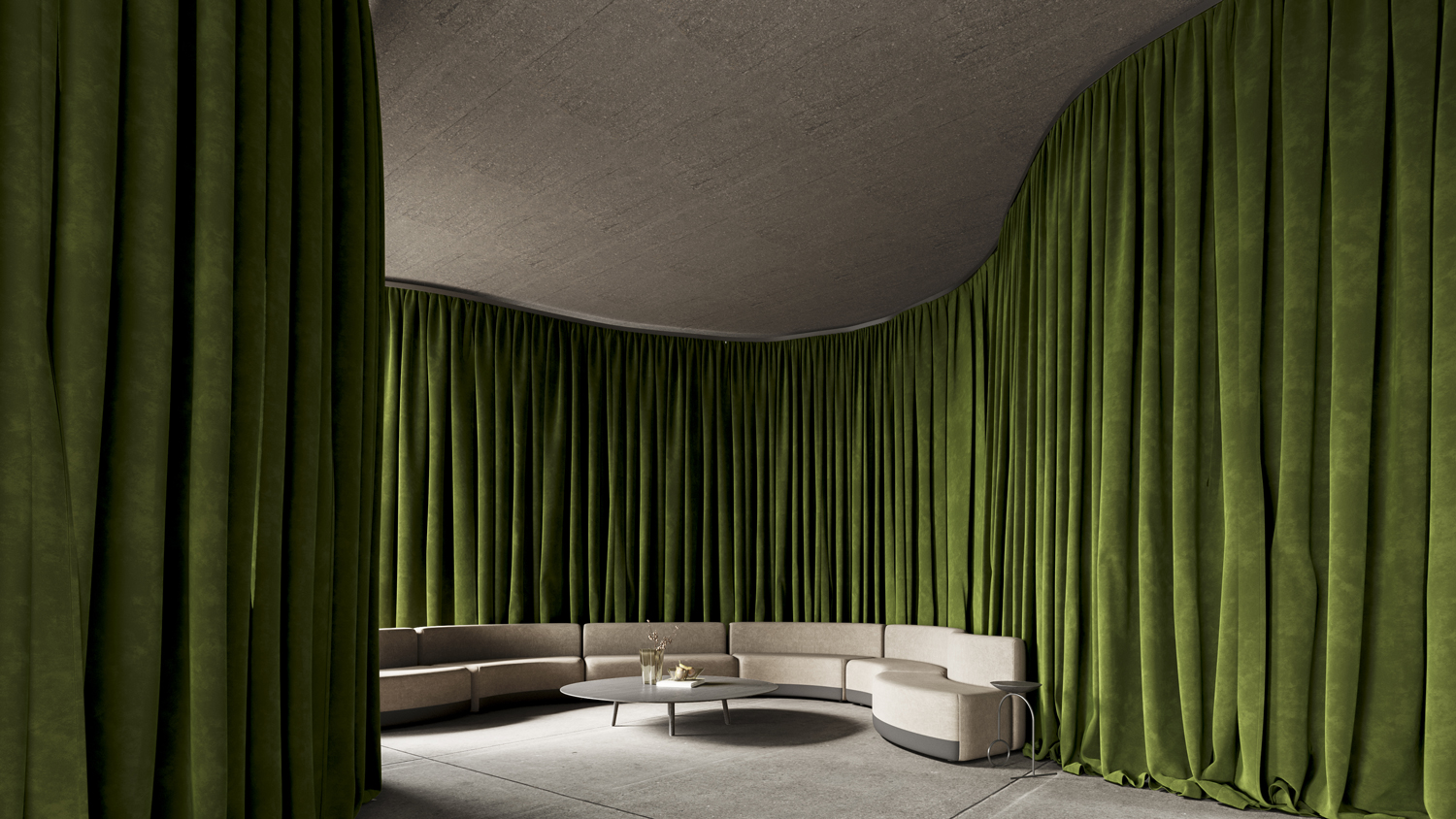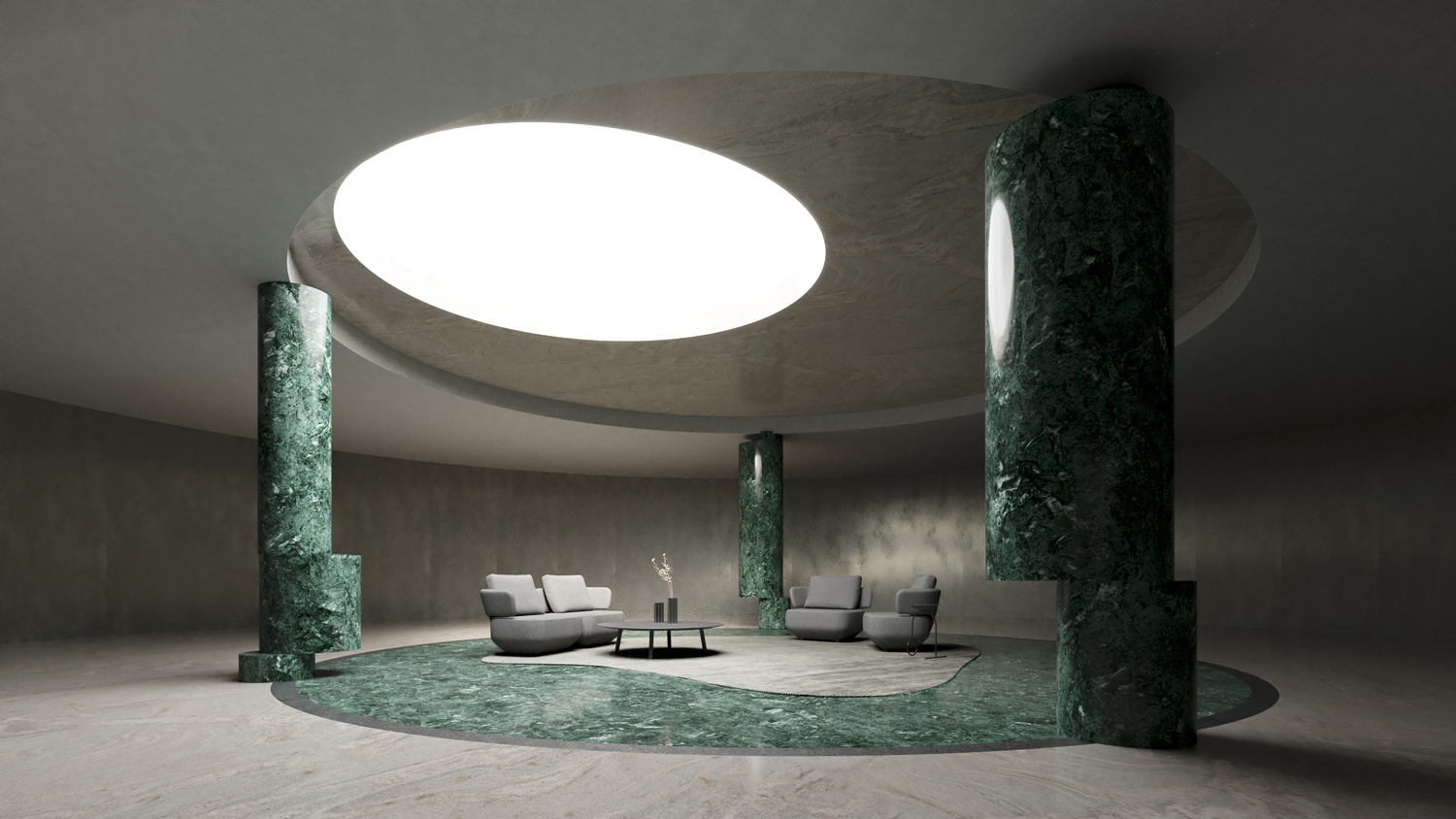☉ Collaborative Spaces Viccarbe is a thrid prize competition entry by Sergio Llobregat Ruiz developed in 2021. Unrevealed location. Its scale is small with a surface of 200 sqm. Key materials are concrete and stone.
“The space organization is always a collective participation work” – Fernando Távora
Furniture constitutes the semi-fixed element of architecture and participates actively and collectively in the work of organizing any space. It has a fundamental value when creating different atmospheres and working scenarios. Its location in a space and even more so, its material, texture, color, finishing, shape, geometry, design and ergonomics, provoke sensations in the user and invite him to act.
A collaborative space must be a place where a centrality that collects the action and interaction between people exists, a nucleus of activity and work emphasized and supported by the pieces of furniture that will define that centrality and place the individual in an ideal position to work, also as a team.
The proposal establishes three spaces that are accessed through a common anteroom. Each of them has a different furniture distribution, which provides a particular character and a clearly differentiated atmosphere. In the first room, the center of gravity falls on the working tables, which are arranged in a linear manner under the geometric element, which limits them and gives the necessary light quality to work. In this way the focus is on coworking.
In the second room, the furniture is framed by three large pillars and a circular skylight that provides overhead lighting. In this way and given that the seats are placed in a circular way and facing each other, dialogue is facilitated in a room where the interrelation between people happens naturally. In the third room, the sofas arranged continuously, following an organic and random layout, supported by the curtains that provide privacy and comfort, generate an atmosphere where work and rest after work, together, can take place.
It is clear then that, by focusing attention on the furniture, and establishing it as the center of the scenography, it can generate wealth not only spatial, but also social, and favouring the diversity of atmospheres within the same collaborative space.
